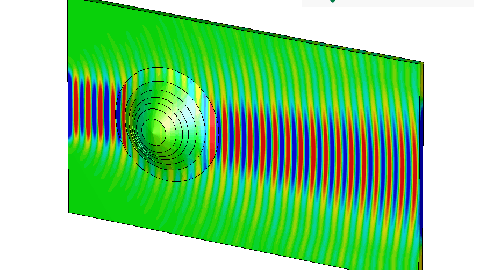Scientists Get One Step Closer to Developing an Invisibility Cloak

In an instance of science bridging the gap with fantasy and science fiction, researchers took a major step in creating an invisibility cloak. They made a part of an object disappear by using a special material made of nano particles that can affect how an object’s surface looks.
In particular, researchers from QMUL (Queen Mary University of London), created a cloaking device that makes curved surfaces appear flat to electromagnetic waves.
The co-author of the study, Professor Yang Hao, explained it this way:
“The design is based upon transformation optics, a concept behind the idea of the invisibility cloak. Previous research has shown this technique working at one frequency. However, we can demonstrate that it works at a greater range of frequencies making it more useful for other engineering applications, such as nano-antennas and the aerospace industry.”
As Professor Hao indicates, they are looking to find more prosaic initial applications of this device, in microwave tech, acoustics, optics or, for instance, to allow antennas of different sizes, shapes and materials to be installed in all manner of places without becoming eye sores. Will this tech eventually bring us the invisible man of H.G. Wells, Harry Potter-like invisibility cloak or the cloaking spaceships of Star Trek? Imagination can certainly run wild at such news.

This figure from the study shows the curved surface of the object the scientists made to look flat. More specifically: Cosine-shaped surface deformation: (a) top-view and (b) side-view; Schematic indicating the required permittivity values for each layer (c); 3D printed prototype of the cloak structure with cross-section inset (d); Fabricated surface wave structures: (e) plane view of the samples and (f) the three composite structures manufactured.
What they actually did is cover the curved surface with a newly-engineered 7-layer nanocomposite medium, with the electric properties of each layer differing based on position. This ended up cloaking that part by allowing electromagnetic waves to pass through the object without scattering.
The study’s another author, Dr. Luigi La Spada elaborated on the implications of their work:
“The study and manipulation of surface waves is the key to develop technological and industrial solutions in the design of real-life platforms, for different application fields. We demonstrated a practical possibility to use nanocomposites to control surface wave propagation through advanced additive manufacturing. Perhaps most importantly, the approach used can be applied to other physical phenomena that are described by wave equations, such as acoustics. For this reason, we believe that this work has a great industrial impact.”
You can read the full study here.





